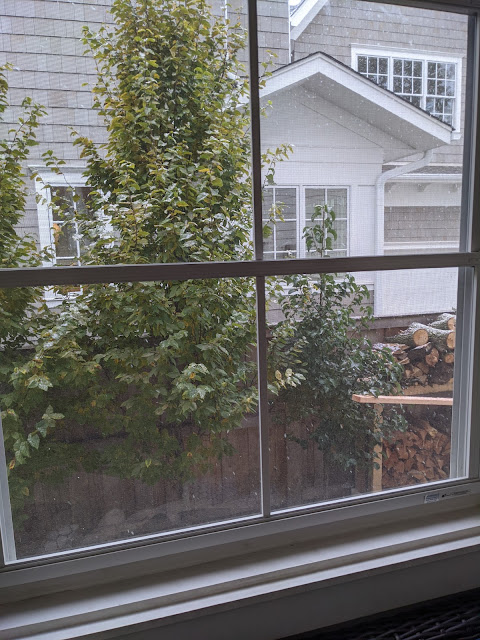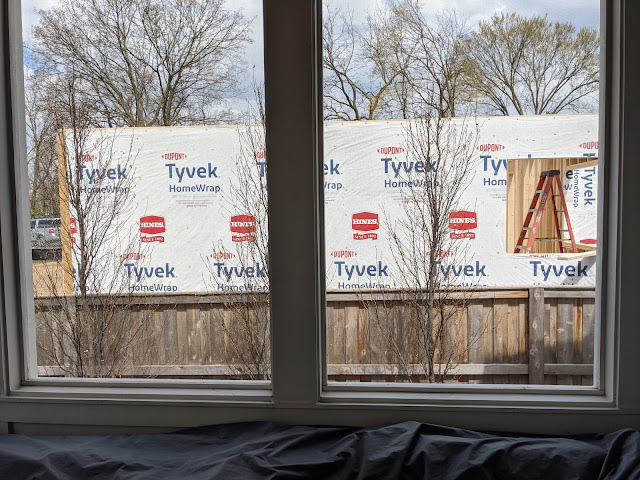Chanticleer Pear - Fall Show - November 2020

Yesterday, I mentioned that we don't get A TON of fall colors in our yard - mostly due to the variety of trees that we inherited, but posted a photo of our small Bald Cypress in the front yard that was showing some fall colors . We have a couple of Chanticleer Pear flowering trees in our yard (I know, I know...) that normally retain their leaves for a good part of Fall - leading into Winter. There have been a number of years that I've tried to wrap a couple of these trees with Christmas lights to only have to deal with the leaves that have stuck around. This year, however, two of these trees (We technically have four with two in decline) have decided to put on a really great Fall Show with oranges and reds. Here is the one on our north fence line you can see below: I'll get out and measure the caliper of this tree this Winter, but I'm thinking this tree has grown just a little bit this year.











